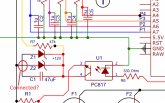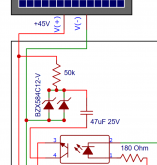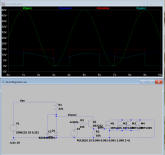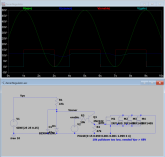Now I'm confused. It doesn't appear that the circuit works. The zener anode and cap should be connected to PV ground. U1-4 should be connected to zener cathode to supply 12V to the gates.
The time constant is 2.2 sec when U1 is off.
Actually, time constant is yet higher than 2.2 sec since the zener will rob cap charging current.
You're right about RC time constant, my eyes were blurry this morning.
The 10k isn't in the circuit making a divider until the BJT turns on.
Prior to that, time-constant for C1 rising towards 1/e of 47V is 2.2 seconds.
But it only rises 1/4 of the way to 12V before zener clamps that. Takes what, 1/4 of a second?
For a diode in the forward conducting direction, "current" (opposite of electrons) flows from positive supply to negative in the direction of the triangle "arrow" in the symbol, correct? So the Zener is reverse-biased, draws little to no current until voltage approaches the 12V knee. It doesn't affect RC time constant until then.
Oh! missing the dot! Neither the zeners nor the capacitor do anything at all as drawn. Bhupinder - avoid a cross for connection in schematics, use a "T" so unconnected crossings are clearly different from connections:

In an earlier incarnation, the zeners were connected correctly but the capacitor was not:

There's a danger in re-drawing circuits. Best to create a netlist and compare old & new schematics.
I've made that mistake and produced broken designs, either renaming a net on one page but not another, or rearranging and causing wires to connect, then separating them again but incorrectly. Ended up with + and - inputs to an op-amp reversed, had to lift leads of an SOIC to rewire.
Below the ideal bias current the zener still conducts, just less. So with the resistors selected it'll be a bit below 12V, loosely regulated. I think it still works.
Other than the missing connection (and divider networks so microprocessor ADC can measure Vpv), I think the circuit works.








